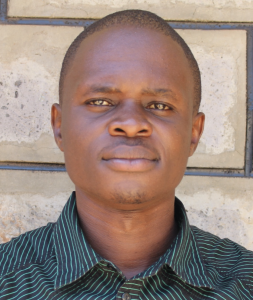Makale community members are large scale farmers who practice sugarcane farming as their main cash crop. Based in a rural set-up, most houses here are semi-permanent and grass-thatched with a majority not connected to electricity.
320 people in Makale depend on Banana spring as their only year-round source of water. For many years, community members have tried to protect the spring but it has never been fully accomplished. Without the needed materials and technical expertise for full spring protection, they have tried piecemeal cement and stone works but to no avail.
Water from Banana Spring is not fit for consumption as the catchment area and the water are open to contaminants. Because there is no cut-off drainage above or around the spring, most surface water drains into the spring. The runoff brings with it farm chemicals, residue from animal waste, and soil into the drinking water.
Despite their best efforts, community members are still collecting dirty water, and they continue to report cases of cholera and typhoid within the village.
"Water from our spring is not suitable for drinking unless treated. Twice I have been diagnosed with typhoid and this I relate to the water from the spring which I believe was contaminated," said 57-year-old farmer Jackson Wambunya.
The problem is, treating water costs families in ways most cannot afford. Boiling all water before drinking it requires collecting and using a lot of extra firewood and time spent over the stove for women. Market-bought water treatment options are financially out of reach for most families to have any access, let alone consistent access. Thus, the frequency of water-related diseases persists.
Cholera and typhoid, among other waterborne illnesses, are expensive to treat and they suck productive time and energy out of the ill. Adults miss work, and kids have to stay home from school, often falling behind in their lessons.
Because people are accessing the water from an open area where it pools, these contaminants also flow directly into the pool, not just underground where they mix with the groundwater feeding the spring. The frequent and heavy rains are especially problematic when they wash so much soil into the water that community members have to dig it out to find the pool again. Both the rain and the digging severely disturb the water, wasting people's time as they wait for the mud and sand to settle so they can begin fetching water again.
To fetch water, people either try to submerge their jerrycans in the shallow pool, or they use a small jug to scoop water to pour into their larger container. Both ways bring dirt and bacteria from the containers and peoples' hands into the very water they are collecting. These methods are also time-consuming, and even those who submerge their containers need to top them off using a jug.
Some community members wake up very early in the morning to go fetch water before doing anything else for fear of the large crowds that form during the day. The overcrowding and long wait times at the water point mean less time available for all of the days' other work and activities.
"My performance in classwork is below average as much time is spent fetching water from the spring, meaning I am not able to create time for my studies," reported primary school student Elizabeth.
What We Can Do:
Spring Protection
Protecting the spring will help provide access to cleaner and safer water and reduce the time people have to spend to fetch it. Construction will keep surface runoff and other contaminants out of the water. With the community’s high involvement in the process, there should be a good sense of responsibility and ownership for the new clean water source.
Fetching water is a task predominantly carried out by women and young girls. Protecting the spring and offering training and support will, therefore, help empower the female members of the community by freeing up more of their time and energy to engage and invest in income-generating activities and their education.
Training on Health, Hygiene, COVID-19, and More
To hold trainings during the pandemic, we work closely with both community leaders and the local government to approve small groups to attend training. We ask community leaders to invite a select yet representative group of people to attend training who will then act as ambassadors to the rest of the community to share what they learn. We also communicate our expectations of physical distancing and wearing masks for all who choose to attend.
The training will focus on improved hygiene, health, and sanitation habits in this community. We will also have a dedicated session on COVID-19 symptoms, transmission routes, and prevention best practices.
With the community’s input, we will identify key leverage points where they can alter their practices at the personal, household, and community levels to affect change. This training will help to ensure participants have the knowledge they need about healthy practices and their importance to make the most of their water point as soon as water is flowing.
Our team of facilitators will use a variety of methods to train community members. Some of these methods include participatory hygiene and sanitation transformation, asset-based community development, group discussions, handouts, and demonstrations at the spring.
One of the most important issues we plan to cover is the handling, storage, and treatment of water. Having a clean water source will be extremely helpful, but it is useless if water gets contaminated by the time it is consumed. We and the community strongly believe that all of these components will work together to improve living standards here, which will help to unlock the potential for these community members to live better, healthier lives.
We will then conduct a small series of follow-up trainings before transitioning to our regularly scheduled support visits throughout the year.
Training will result in the formation of a water user committee, elected by their peers, that will oversee the operations and maintenance of the spring. The committee will enforce proper behavior around the spring and delegate tasks that will help preserve the site, such as building a fence and digging proper drainage channels. The fence will keep out destructive animals and unwanted waste, and the drainage will keep the area’s mosquito population at a minimum.

 Protected Spring
Protected Spring
 Rehabilitation Project
Rehabilitation Project




































